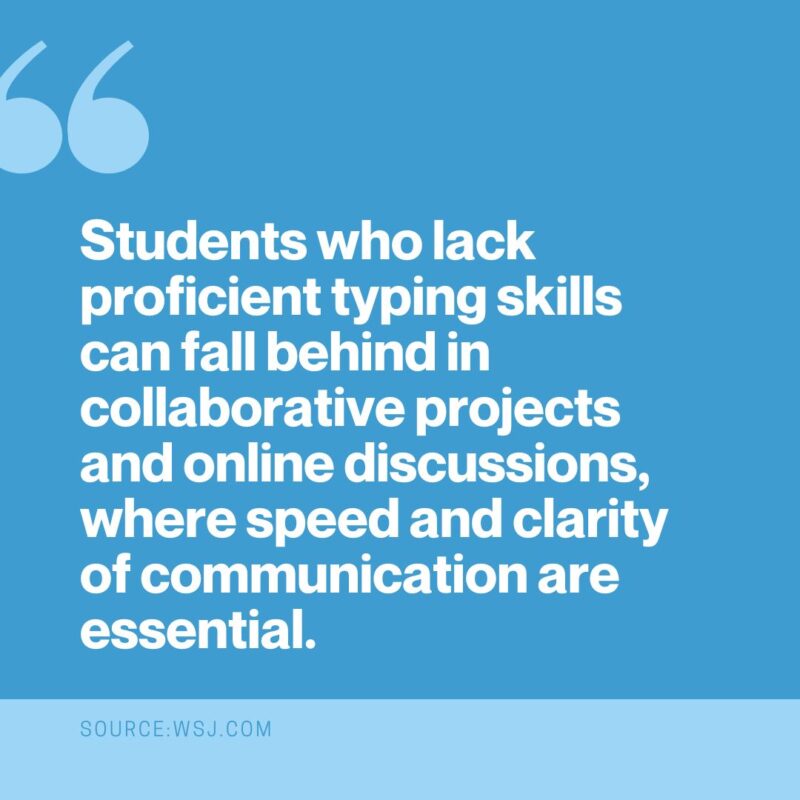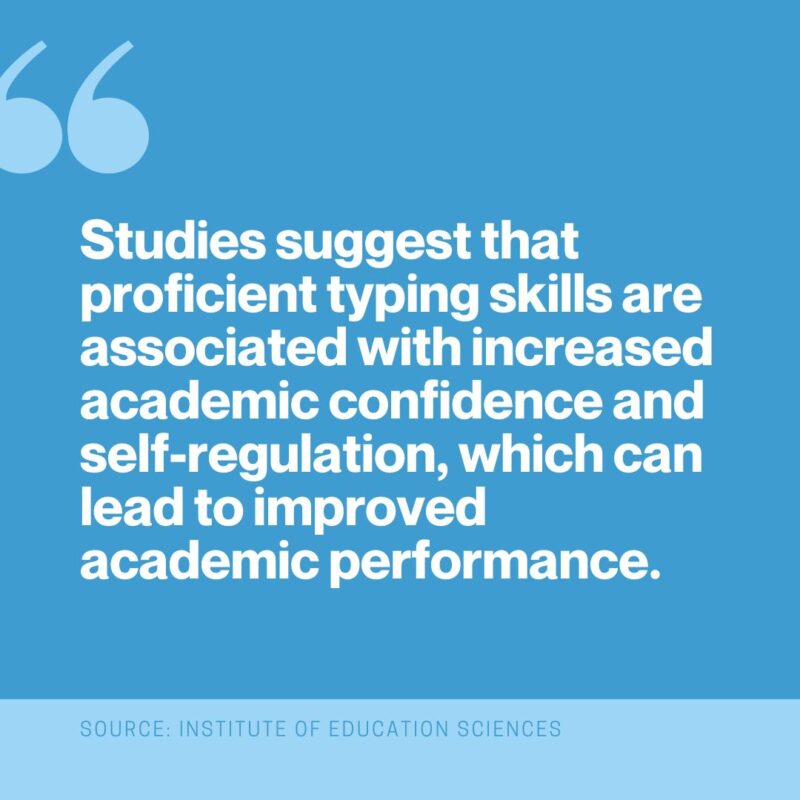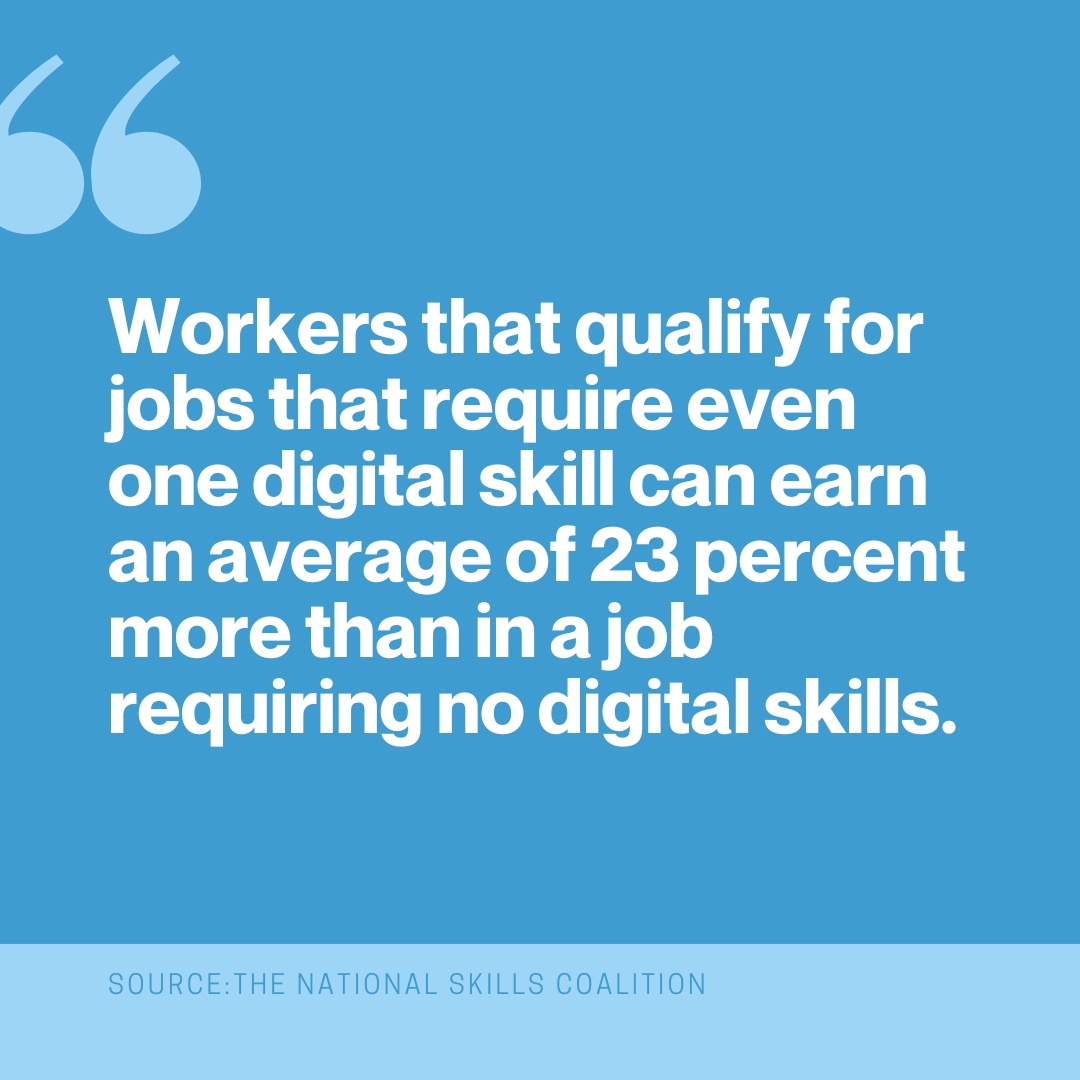Students Need To Learn How To Type

After weeks of prepping for a research paper—choosing topics, gathering sources, and writing outlines—it was finally time for my 9th graders to type their first drafts. To my shock, over half the class opened Google Docs on their phones instead of using their laptops. When I asked why, nearly all replied, “I can text faster than I type. It’s easier.” My arguments about them needing to see the whole document or managing citations made no impact—they were set on using their phones.
In 2000, nearly 44% of graduating high school seniors had taken a keyboarding course. By 2019, the number dropped to 2.9%. The experts told us, “They’re on computers all day long. They’ll pick it up naturally!” But as many of us have seen in our classrooms, that isn’t what happened. The kids may be great at swiping and tapping, but many lack the foundational typing skills they need to be successful in school and beyond. Let’s take a closer look at how weak typing skills can hold students back—and how we can set them up for success with this must-have skill.
Struggling with online standardized testing

As teachers, we know the benefits of having our students write out their thoughts by hand. Nevertheless, technology is here to stay, and online standardized testing isn’t going anywhere anytime soon. Pennsylvania, for example, recently announced that all its standardized testing will be online by 2026. Because of this, the need for our students to learn how to type has to start early. Standardized tests often include essay questions and short-answer responses that students who “hunt and peck” will struggle to respond to in the time allotted for the test. This could affect their overall performance and confidence. When students learn how to type, they’re set up for success in testing and beyond.
Difficulty staying on top of classwork

From Google Classroom to online note-taking, so much of the learning experience now takes place online. Students who struggle to type are at risk of falling behind in their classwork. They miss out on key information as they try to keep up with taking notes and listening. All of this can lead to feeling overwhelmed or frustrated by their classwork. When students learn how to type, the concern of “keeping up” with the pace of information goes away, allowing them to focus on the learning taking place.
Challenges communicating and collaborating

Typing isn’t just about testing or taking notes—it’s a vital tool for communicating and collaborating with others. We ask our students to participate in group projects and online discussions all the time. Additionally, students are often tasked with emailing their teachers to ask questions about assignments or their grades. Without the proper typing skills, we’re setting our students up to miss out on opportunities to connect with others. By helping students learn how to type, we’re giving them another tool to share their voice that they’ll use in our classrooms and in future workplaces.
Decreased academic confidence

The more a student struggles to write a paper, complete an online assignment, or even participate in a class discussion, their sense of frustration and isolation grows. Eventually, this can lead to a student checking out from learning altogether. Why keep trying if it never gets any easier? This disengagement not only affects their current performance but can also harm their long-term motivation and willingness to tackle new challenges. We can remove this barrier, help keep our students engaged, and support their confidence in their own ability to learn and succeed by helping them learn how to type.
Missed opportunities after graduation

Think about how much time you spend typing every day. In today’s world, most communication and work tasks happen digitally. Without strong typing skills, our students may struggle to navigate the tools they’ll need to be successful in college or the workplace. Compared to peers who type with confidence, our struggling typists will miss opportunities as they focus on the mechanics of inputting their ideas rather than the ideas themselves. By teaching typing now, we’re equipping our students with a skill they’ll need to succeed not just in our classrooms but after graduation as well.
Finding a typing program that works
For a typing program to be successful, it needs to be user-friendly, with customizable lessons and engaging activities that make it easy to meet the needs of different learners. Typing.com meets this high standard. With built-in progress-tracking and reporting tools, teachers and administrators can monitor student growth and support their development. And students enjoy the typing games, coding curriculum, and ability to see their improvement in real time. Typing.com provides a reliable resource to help students build a necessary skill that will allow them to communicate confidently throughout school and their futures.
Discover how Typing.com can support your students’ success. Sign up for a free teacher account today!
Source link




